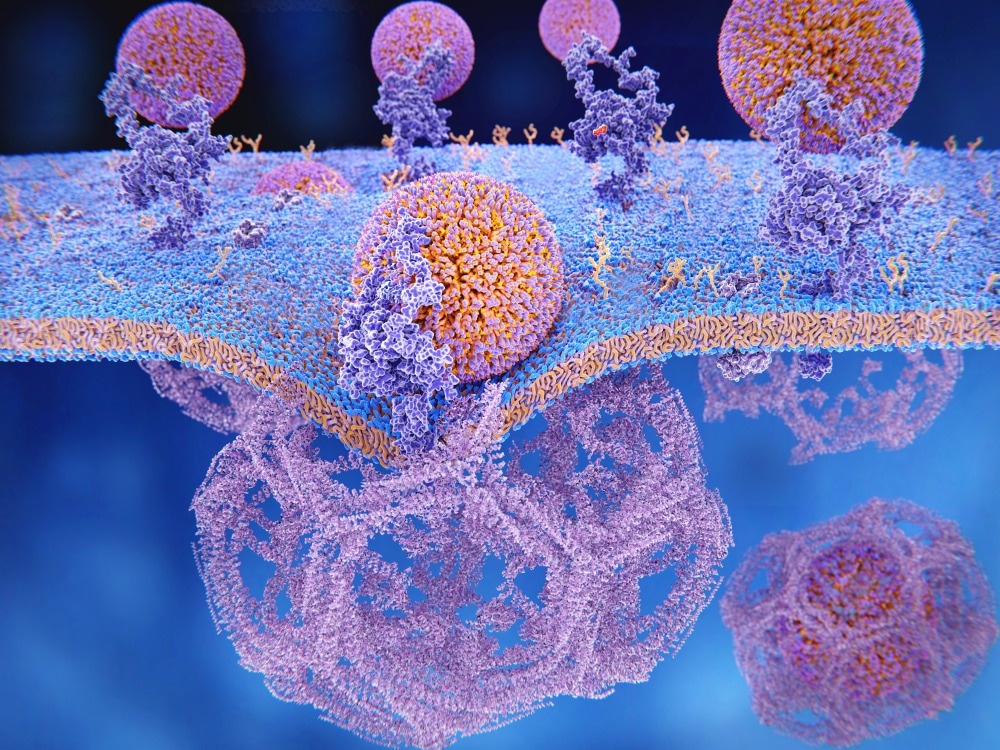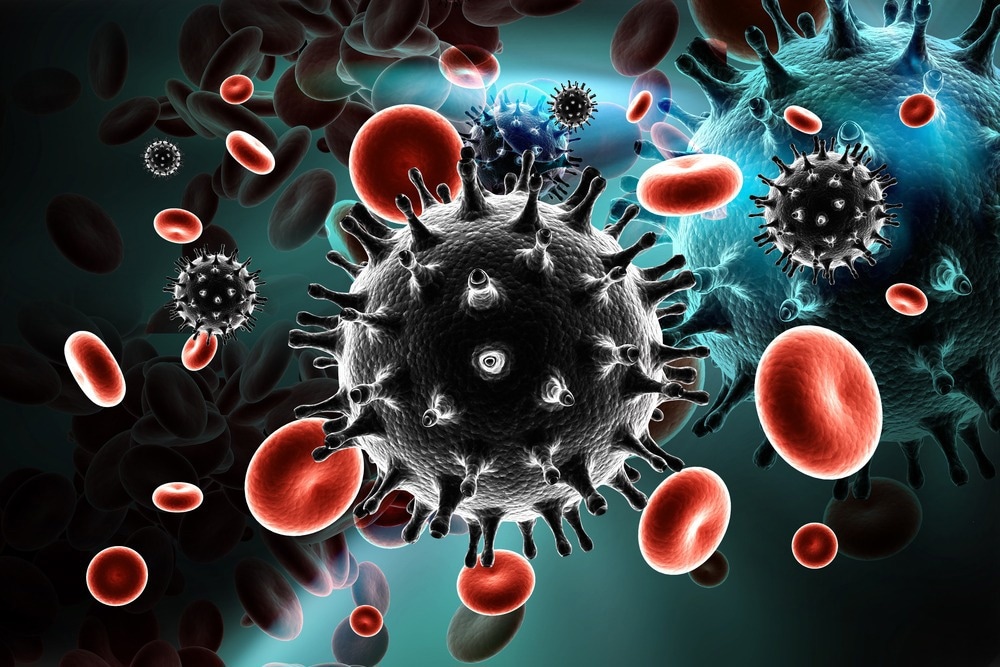Introduction to Protein Degradation
Protein degradation is a normal and crucial part of the multiple regulatory mechanisms to maintain homeostasis within the human body. Proteins are constantly destroyed and renewed through protein synthesis. Different proteins are degraded at different rates, and each cell has multiple systems that selectively carry out proteolysis. Targeting this process provides a therapeutic approach to diseases that target pathways crucial within human immunology.

Image Credit: Juan Gaertner/Shutterstock.com
Protein Degradation Pathways
Eukaryotic cells use proteosomes to degrade proteins via the ubiquitin-proteosome pathway (UPP), and lysosomes degrade protein aggregates and whole organelles through endocytosis/phagocytosis. They also use lysosomes to degrade proteins and organelles through endocytosis, phagocytosis, and autophagy.
The main pathway is the UPP which is crucial in human immunology and regulates immune surveillance. The UPP marks proteins for degradation into small peptides, which can be digested into amino acids. The peptides that are not digested are then recognized by the Major Histocompatibility Complex (MHC), a crucial part of the immune system. Once these peptides are taken up by antigen-presenting cells, they are presented to CD4+ lymphocytes on the surface of MHC molecules, resulting in antibody production.
This process can be modified as a targeted mechanism that aids drug development and treatment of pathogenic and autoimmune diseases. This is known as targeted protein degradation and has a major role in human immunology
What is Targeted Protein Degradation (TPD)
First proposed in 1999, TPD is a therapeutic strategy that aims to target proteins that cause diseases. These proteins have been difficult to target because their active sites are hard to access with conventional small molecule inhibitors. It is important to be able to target these proteins as they have key roles in propagating cancers, autoimmune diseases, and neurodegenerative diseases, so targeting them helps modulate the immunology of these diseases and develop more accurate therapeutic approaches. The drug compounds used aim to disrupt homeostatic mechanisms by interfering with the degradation and processing of proteins.
How does TPD interfere with UPP?
The UPP pathway, as mentioned before, is a crucial part of human immunology and an important component of this pathway is the E3 enzyme which recognizes the targeted protein. This interacts with a 26S proteosome which degrades the protein.
TPD approaches that interfere with the UPP pathway target the E3 ligase enzyme family. One of the earliest TPD was developed 20 years ago and is known as proteolysis-targeting chimera (PROTAC) molecules, also known as protein degraders. These molecules are made up of 2 ligands, where one binds the target protein, and the other binds the E3 ligase. This results in the activation of the UPP system and degradation of the target protein. PROTACs were proven effective in a clinical setting in 2019 against the estrogen receptor (ER) and androgen receptor (AR), a common cancer target.
How does TPD interfere with the lysosomal pathway?
The lysosomal pathway mediates an important aspect of immunology by governing the degradation of intracellular proteins.
A TPD strategy known as LYTAC induces the endosome-lysosome pathway to degrade proteins present extracellularly and as part of the membrane. This technique allows LYTAC molecules to bind an extracellular domain of the target protein and a lysosome-targeting receptor (TLR) present on the cell surface. This forms a complex that internalizes the protein and degrades it through endocytosis.
How can TPD help treat viral diseases?
Viruses are known to be a unique challenge to the immunology of the human body. A successful vaccination program and antiviral drugs are known to combat this. However, the rise of resistance against treatment hinders these efforts, requiring the development of new therapeutic strategies.
Many viruses have evolved mechanisms to avoid immune defense, with one such virus being HIV. It encodes the Nef protein, which targets CD4+ molecules and MHC proteins for degradation via the lysosomal pathway. This affects adaptive immunology by interfering with T- cell responses.

Image Credit: RAJ CREATIONZS/Shutterstock.com
TPD treatment for Cancer
A lot of cancer-causing proteins hinder immunological processes. For example, BCL-XL is a protein that interferes with cell death and causes malignant cells to escape degradation and regulation. Therefore, it can be an important target for TPD. Significant side effects, such as severe platelet deficiency, were observed with small- molecule inhibitors, calling for the development of TPD strategies. Recent research has shown reduced platelet deficiency with a potent PROTAC targeting BCL-XL.
Another example that showcases the therapeutic effects exhibited by PROTAC is ARV-471. This molecule targets the estrogen receptor (ER) protein, which is involved in the development of breast cancer. Through preclinical and clinical trials, it has been established that degradation reduces tumor growth in xenograft models.
TPD has a major role in immunology as it protects crucial mechanisms when pathogens, cancers, and other diseases target the mechanisms that protect and regulate key functions. There has been a major success with the development of new TPD molecules that are promising drug candidates. However, there is still a plethora of research that needs to be carried out to provide conclusive evidence for the effectiveness of TPD.
Continue Reading: Understanding Neurobiology through Proteins
Sources:
- Békés, M., Langley, D. R. & Crews, C. M. (2022). ‘Protac targeted protein degraders: The past is prologue’ Nature Reviews Drug Discovery, 21 (3), pp. 181-200. DOI: 10.1038/s41573-021-00371-6 Available at: https://doi.org/10.1038/s41573-021-00371-6.
- Grohmann, C., Marapana, D. S. & Ebert, G. (2022). ‘Targeted protein degradation at the host-pathogen interface’ Mol Microbiol, 117 (3), pp. 670-681. DOI: 10.1111/mmi.14849.
- Lin, X., Xiang, H. & Luo, G. (2020). ‘Targeting estrogen receptor α for degradation with protacs: A promising approach to overcome endocrine resistance’ Eur J Med Chem, 206 p. 112689. DOI: 10.1016/j.ejmech.2020.112689.
- Reinstein, E. (2004). ‘Immunologic aspects of protein degradation by the ubiquitin-proteasome system’ Isr Med Assoc J, 6 (7), pp. 420-4.
- Xu, J., Brosseau, J.-P. & Shi, H. (2020). ‘Targeted degradation of immune checkpoint proteins: Emerging strategies for cancer immunotherapy’ Oncogene, 39 (48), pp. 7106-7113. DOI: 10.1038/s41388-020-01491-w Available at: https://doi.org/10.1038/s41388-020-01491-w.
- Zhao, L., et al. (2022). ‘Targeted protein degradation: Mechanisms, strategies and application’ Signal Transduct Target Ther, 7 (1), p. 113. DOI: 10.1038/s41392-022-00966-4.
Further Reading
Last Updated: Nov 2, 2022